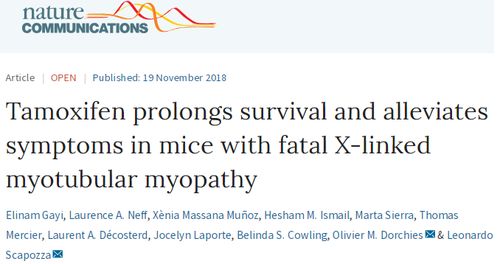Understanding Myotubular Myopathy

Myotubular myopathy, also known as MTM, is a rare genetic disorder that primarily affects the muscles. It is an X-linked recessive condition, meaning that the gene mutation responsible for the disorder is located on the X chromosome. This article aims to provide a comprehensive overview of myotubular myopathy, its symptoms, diagnosis, treatment, and the impact it has on individuals and families affected by this condition.
What is Myotubular Myopathy?

Myotubular myopathy is characterized by the abnormal development of muscle cells, leading to muscle weakness and wasting. The condition is caused by mutations in the MTM1 gene, which provides instructions for the production of the myotubularin protein. This protein plays a crucial role in muscle cell development and function.
Symptoms of Myotubular Myopathy

Individuals with myotubular myopathy typically experience muscle weakness and wasting, which can vary in severity. Common symptoms include:
- Problems with feeding and swallowing
- Difficulty breathing and respiratory issues
- Weakness in the muscles of the eyes, face, and neck
- Problems with movement and coordination
- Developmental delays and intellectual disabilities in some cases
Diagnosis of Myotubular Myopathy
Diagnosing myotubular myopathy can be challenging, as the symptoms can be similar to other muscle disorders. A combination of clinical evaluation, genetic testing, and muscle biopsy is often used to confirm the diagnosis.
| Method | Description |
|---|---|
| Clinical Evaluation | A thorough physical examination and medical history to identify symptoms and potential underlying causes |
| Genetic Testing | Testing for mutations in the MTM1 gene to confirm the diagnosis |
| Muscle Biopsy | Removing a small sample of muscle tissue for examination under a microscope to identify characteristic changes in muscle cells |
Treatment and Management
There is no cure for myotubular myopathy, but various treatments and management strategies can help alleviate symptoms and improve quality of life. These may include:
- Physical therapy to maintain muscle strength and flexibility
- Occupational therapy to help with daily activities and adaptive equipment
- Speech therapy for feeding and swallowing difficulties
- Assistive devices, such as wheelchairs and breathing machines
- Medications to manage specific symptoms, such as respiratory issues or muscle spasms
Impact on Individuals and Families
Living with myotubular myopathy can be challenging for both individuals and their families. The condition can lead to significant physical, emotional, and social challenges. Support groups and resources are available to help individuals and families cope with the impact of the disorder.
Prevention and Genetic Counseling
Since myotubular myopathy is an X-linked recessive condition, there is no way to prevent the disorder in individuals who carry the mutated gene. However, genetic counseling can be helpful for families who have a history of the condition. Genetic counselors can provide information about the risk of passing the mutated gene to future children and discuss options for family planning.
Conclusion
Myotubular myopathy is a rare genetic disorder that affects muscle development and function. While there is no cure, various treatments and management strategies can help individuals with the condition lead fulfilling lives. Understanding the symptoms, diagnosis, and treatment options is crucial for individuals and families affected by myotubular myopathy.


















